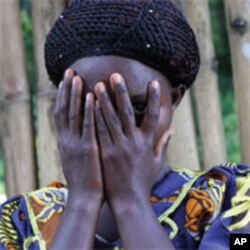Nearly 20 humanitarian organizations are calling on the U.N. and international community to prevent another Christmas massacre in the eastern DRC.
They released a new report Tuesday called Ghosts of Christmas Past, which details attacks by the rebel Lord’s Resistance Army (LRA). The LRA, originally based in Uganda, has a long history of child abductions, rapes and killings.
Marcel Stoessel, head of Oxfam in the DRC, is in the town of Niangara in Orientale Province in northeast Congo, near the Sudan border. “The Lord’s Resistance Army, the LRA, is the most brutal rebel force in Africa,” he says. “They have killed a thousand people in the last year alone. And there were these horrendous Christmas massacres both in 2008 and 2009.”
In 2008, over a three-week period, the groups say 865 women, men and children were beaten to death and hundreds more were abducted. In 2009, more than 300 people were killed around Christmastime.
Feeling abandoned
Niangara, he says, is in the heart of LRA territory.
“The people are afraid. The people are telling us that they are worried that such a thing could happen again to them. There are brutal attacks. There are rapes still happening. As recently as last Friday, two kilometers from where I am right now, there was an incursion by the LRA and they looted some food.”
The LRA attacks are also affecting humanitarian operations in the Eastern DRC, making it difficult to access many areas.
Stoessel says, “In short, the people are telling us we really feel not protected. We don’t feel that anybody is thinking about us…. We don’t feel that the Congolese army or the U.N. peacekeepers or anybody else, for that matter, is concerned about our fate.”
There are some troops in the Niangara area. “We see Congolese army troops patrolling,” says Stoessel. “As far as the U.N. troops are concerned, very frequently we see them only on the road. And the communities are telling us they would wish they would get out of their vehicles and be more close to the population because this is a very remote area and along the main roads is not necessarily where the protection is most needed.”
He says the U.N. mission in the DRC, known as MONUSCO, is the biggest in the world. But he adds, “There are only a little more than 600 troops here out of the 18,000 troops in country. So, it’s very, very disappointing. At the same time, it’s the responsibility of the Congolese government to protect their citizens and we should not forget that.”
Desperate rebels
The LRA is no longer one fighting force. In recent years, it’s split into many smaller groups that have terrorized the region.
“They are quite desperate,” Stoessel says. “This is the time of the year where the main river here is quite low, so they have easier access to the towns like Niangara, where I am now. And also, it’s the time of harvest. So the population generally is quite hungry at this time. It’s the same for those LRA units of small groups that are roaming around the bush. It’s very, very unpredictable where they will strike next and that’s why people are so afraid.”
What can be done?
“The international community must renew its attention to this forgotten crisis here in Central Africa in the northeast of Congo. And the regional governments in Sudan, in Uganda, in Central African Republic and here in the DRC…must get together to combine their forces and find a solution for this horrendous problem of the LRA,” he says.
The humanitarian groups are making an urgent appeal to U.N. forces in the DRC to make northeastern Congo a priority and “to prevent another Christmas massacre.”
The LRA has also launched attacks in Sudan and the CAR.








